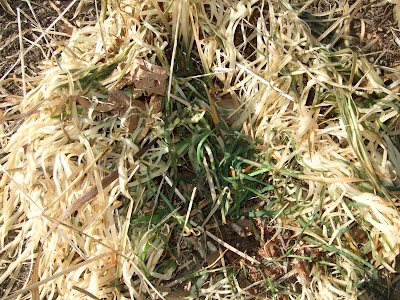I promise I took these shots on the 15th, though I'm a little late posting for Garden Bloggers Bloom Day. Some plants are carrying on bravely but look somewhat washed out in our harsh summer light.
One of my favorite is gomphrena--here are the red and purple varieties against a background of trailing lantana.
This summer snapdragon (angelonia ) is true to its nickname. Next to it is a supertunia picked up at Shoal Creek. In June it browned back severely, so I cut it back to a few green stubs, and this is its comeback--super.
If they're lucky, my several plumbagos get some water about once a week.
This dianthus was potted three years ago. The cleome seeds itself everywhere. Zexmenia (background) would live in hell if it had to.
Thyrallis looks spring-like and fragile but will bloom in the heat for a long time.
Passionvine blooms seem to come in waves--this week about ten popped up on this plant.
Pigeonberry--the happy little groundcover that continues growing and blooming even while forming its red berries.
And what would I do without my giant flame acanthus bush within a few feet of my back porch. Hummingbirds galore!
Elsewhere in the garden-- riots of orange cosmos, four-nerve daisy, Black n Blue salvia, indigo spires, frogfruit with its tiny white blossoms, tropical sage, Pride of Barbados, and the ubiquitous blackfoot daisy.
Can we keep this up for another month?














